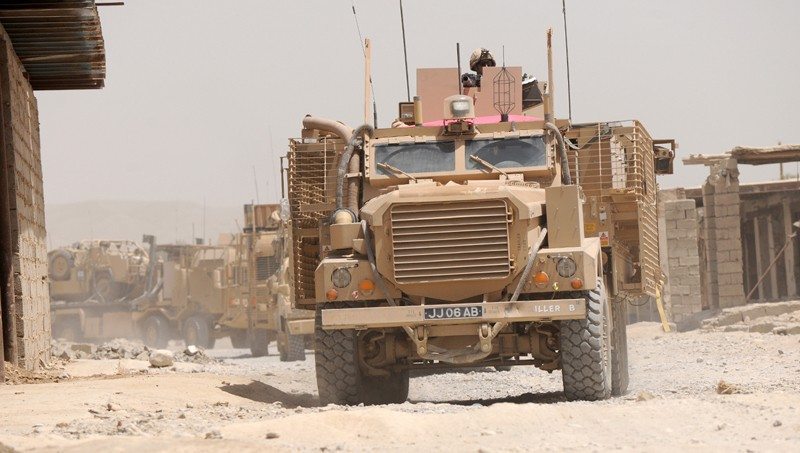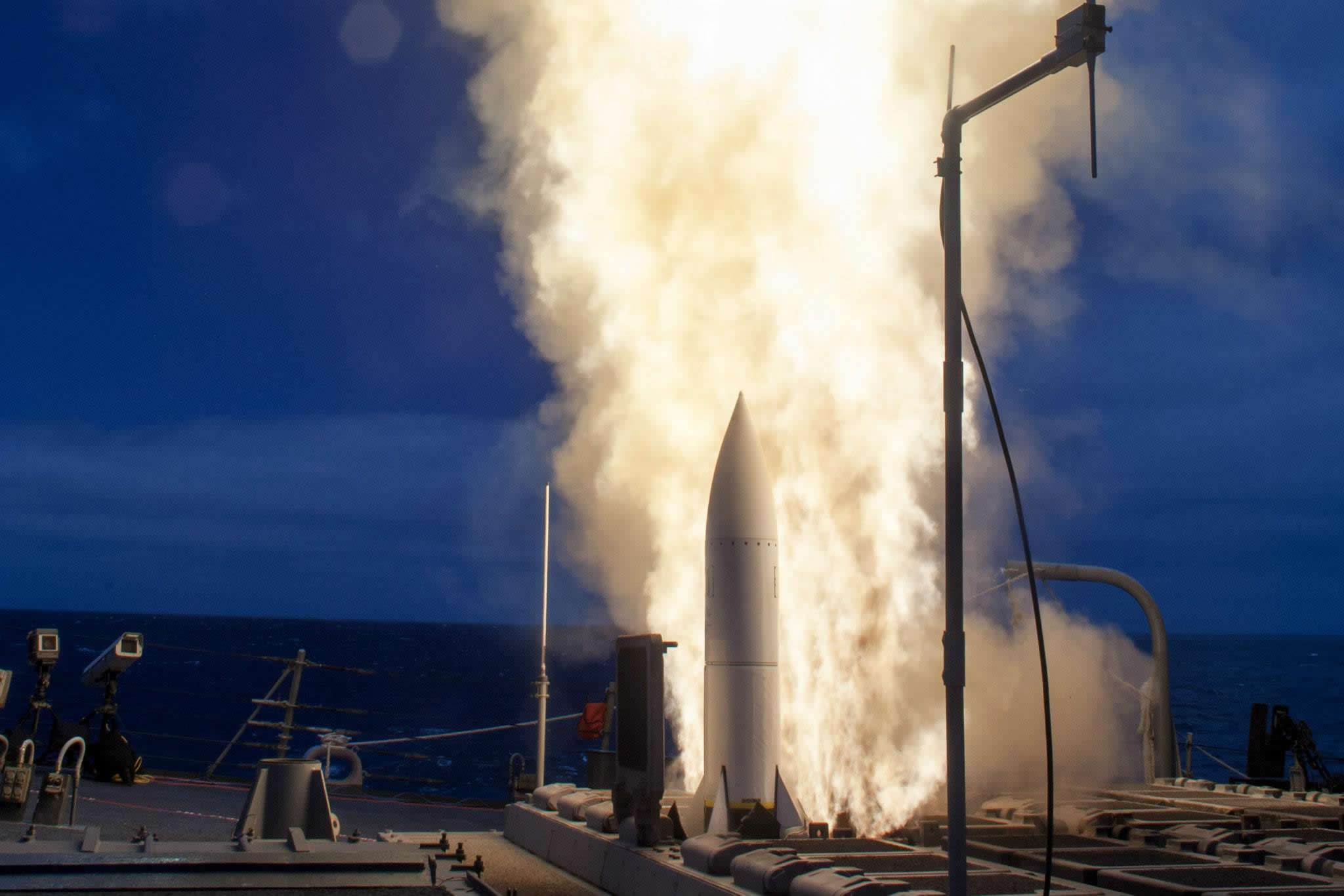Russia’s defense industry continues to maintain that a Russian version of the MRAP (Mine Resistance Ambush Protected) vehicle should be developed, but the Russian military’s need for vehicles in the class is not apparent, expert Alexei Ramm writes in an article in the Military Industrial Courier weekly.
The Soviet Army faced the need to protect its personnel against landmines and ambushes during the Afghan War. The development of relevant vehicles was kicked off, but the Soviet Defense Ministry set a very tough requirement: the vehicles were to have a good cross-country ability.
An armored wheeled vehicle designated as Zvezda (Russian for ‘star’) was fielded with the Russian Interior Force during the first Chechen campaign. An armored compartment was mounted on the Ural-4320 truck and the latter’s cabin and key units were given partial armor protection. Personnel of the Russian National Guard, as the Interior Force is called these days, reminisce that the then priority was to preserve lives of troops. The Zvezda truck entered the Interior Force’s 101st Special Forces Brigade’s inventory in 1996.
The Interior Force continued to pursue the armored compartment line, which has resulted in the well-known Federal version of the Ural truck. The Defense Ministry has procured several dozen Ural and KamAZ trucks fitted with armored compartments too. In particular, they are operated by infantry and special forces brigades stationed in the Southern Military District.
“We have never considered armored compartments to be necessary to the whole of the armed forces. They were supplied to the North Caucasus Military District first, then the Southern Military District, because the troops stationed there participate in the fight against militants in the North Caucasus. The peacekeepers deployed to South Ossetia and Abkhazia had armored compartment-equipped wheeled vehicles too. Such vehicles are useless in combined-arms battles,” a military officer close to the problem explained.
The probability of ambushes on the present-day battlefield characterized by the large-scale employment of precision-guided munitions, aircraft and other weapons systems is insignificant. After Defense Minister Anatoly Serdyukov had assumed office, local armed conflicts became a priority of the Russian Armed Forces.
“It is Serdyukov and [General Staff Chief Nikolai] Makarov who decided that the Russian Armed Forces needed MRAPs. In particular, they planned to switch to such vehicles not only scouts and special operators but whole brigades as well and to designate the brigades as light,” the Defense Ministry official reminiscences.
To test the concept, the 56th Air Assault Brigade was converted to UAZ high-mobility wheeled vehicles. However, the Defense Ministry was not satisfied with what Russia’s automotive industry offered it and decided to look for the right vehicle abroad. The Iveco Lince (Lynx, or Rys in Russian) light multirole vehicle was chosen.
“Overall, the design of the Rys’s suspension is common to high-mobility vehicles. The tests and calculations proved that after an improvised explosive device (IED) went off under its V-bottom, the reflected blast wave reached the wheels, not ripping them off but driving the whole structure into the hull. This is especially dangerous because the Rys’s body is not an all-armored compartment – it has only partial armor protection,” a participant in the tests of the armored wheeled vehicles says.
According to Russian Defense Ministry personnel close to the problem, military experts scrutinized several dozen examples of MRAP and other foreign armored wheeled vehicles in 2009-2012, managing not only to familiarize with their characteristics on paper but also test some of them.
As would be expected, the MRAP-types vehicles featured very poor cross-country ability, while armored wheeled vehicles with partial mine protection proved to be unsafe.
The Defense Ministry formulated its requirements this way: the vehicles should protect troops against mines and ambushes and feature high cross-country and carrying capacities. The development work under the Taifun program was launched. It resulted in two families of vehicles – the Taifun-U from the Ural Automobile Plant and the Taifun-K from KamAZ.
“Initially, the Taifuns were supposed to be used by the light brigades. The lessons learnt by the 56th Separate Air Assault Brigade proved that the UAZ Gusar and Rys were not the pick of the bunch, to put it mildly. GAZ-66 light trucks had to be added to the brigades’ vehicular fleets. The Taifuns were supposed to become the basic vehicles of military police brigades. In particular, the early examples were planned for testing by the now-deactivated 130th Brigade,” the Defense Ministry source admits.
The experts approached agree that both the Ural Automotive Plant and KamAZ managed to meet the military’s requirements, albeit not in full. However, the priorities of the Defense Ministry changed in the wake of Anatoly Serdyukov’s resignation, and the Taifuns’ niche shrank considerably.
“These are very pricey vehicles with unique characteristics. However, what would be their purpose now? Carrying troops on the battlefield? APCs [armored personnel carriers] and IFVs [infantry fighting vehicles] would do it better. Hauling cargo, rations and ammo to the FLOT [forward line of own troops]? The Taifuns’ carrying capacity is much lower than that of the vehicles of the Motovoz and Mustang families, the Taifuns cannot handle large cargo and POL [petrol, oil and lubricants], and their armor and mine protection are clearly unnecessary for this job,” the Defense Ministry official says.
The Defense Ministry has decided that the Taifuns will equip reconnaissance battalions and brigades and some of the special forces outfits as well.
“Riding Tigr vehicles, we can infiltrate into the enemy’s rear area, bypassing his advancing elements. This has been repeatedly practiced during exercises. However, Taifuns are very cumbersome, and, hence, operating covertly is out of question in this case,” a special operator – a commissioned officer – says.
The lessons learnt from using the Taifun-K and Taifun-U by the Russian Army’s 10th and 346th Special Forces Brigades have proved that there is only one niche for the vehicles – carrying personnel and cargo in local armed conflicts, which implies the removal of their armored compartments bought by the Defense Ministry previously. There are issues with their technical characteristics as well.
The Taifun-U’s center of gravity sits too high, causing problems with negotiating slopes, especially on operations in mountainous terrain. The Taifun-K has many complicated units and assemblies, with most of them being imported ones. Servicing a vehicle like that other than in a maintenance center is impossible. This poses quite a problem, since the [special operations] units have to operate independently,’ the Defense Ministry official explained.
The Ural Automotive Plant and KamAZ have not succeeded in marrying mine protection and high cross-country ability in their vehicles. Although their Taifuns are far superior to the US-made M-ATV in terms of performance, they are still armored wheeled vehicles with some mine protection, rather than proper MRAPs.
The experience drawn from the latest armed conflicts shows that there is a new trend – the development of mine-protected armored wheeled vehicles that have turned into a crude substitute for IFVs and APCs in some of the armies.
Meanwhile, Russia’s defense industry keeps floating ideas of the need for a Russian-made MRAP. The ideas are good, of course, but the technologies at the disposal of not only Russian firms but their US and European counterparts as well are not mature enough for developing a vehicle like that. Actually, the development of MRAPs is in crisis in both technical and tactical terms now. Their necessity is dubious, and they are very expensive, expert Alexei Ramm writes in his article in the Military Industrial Courier weekly.











